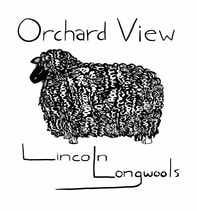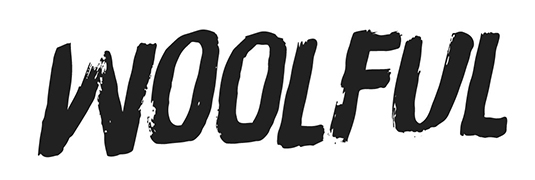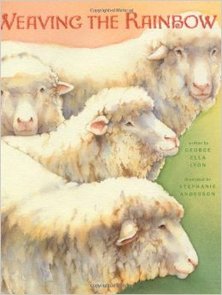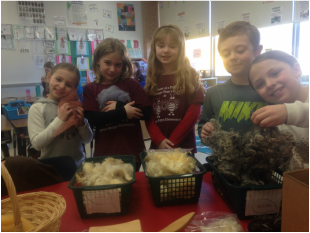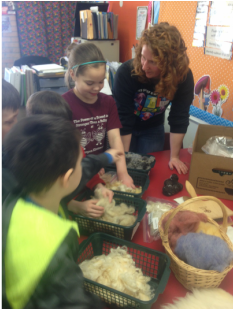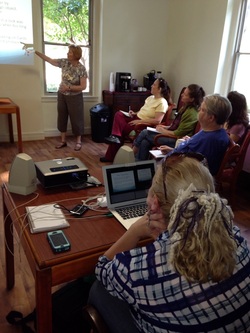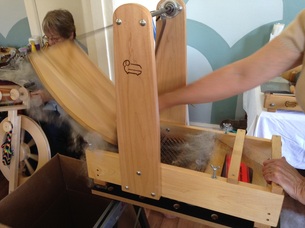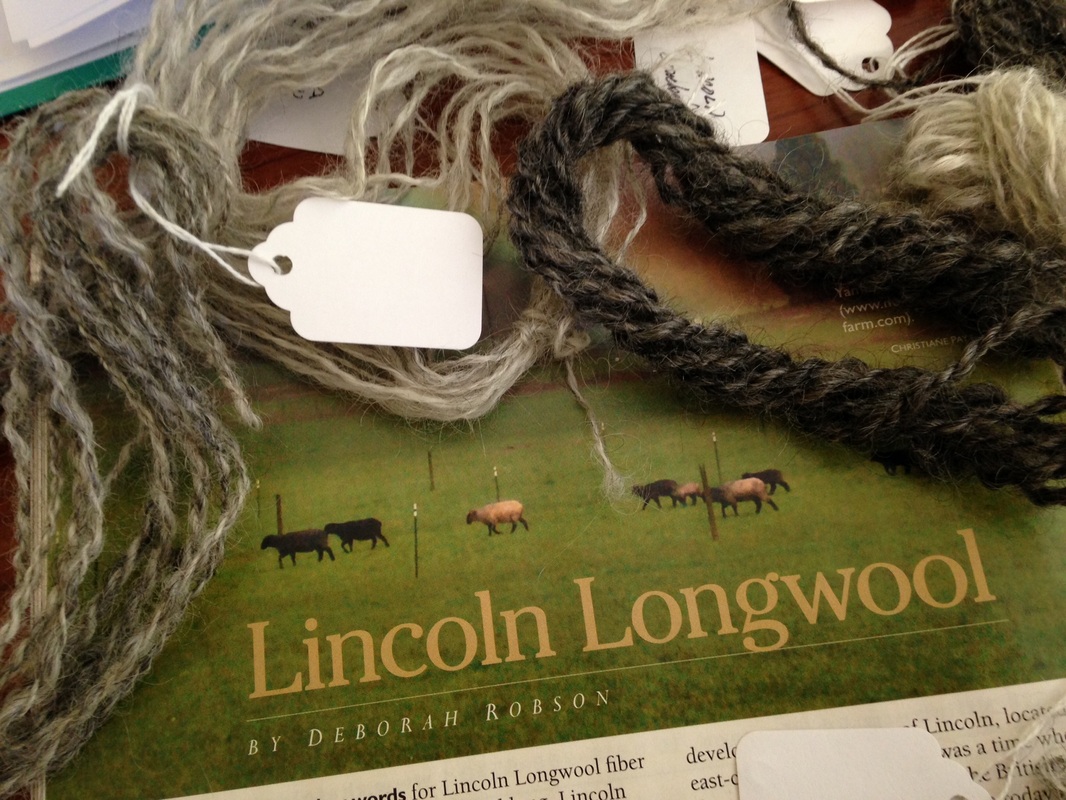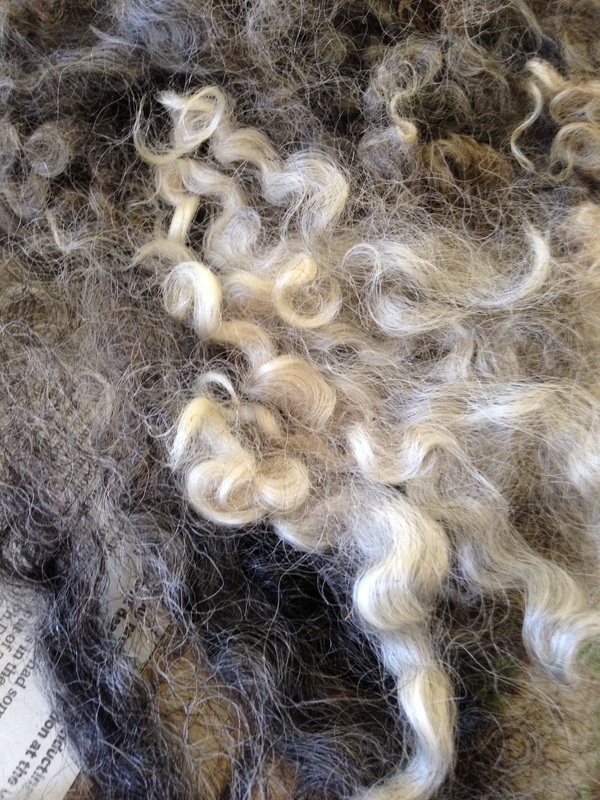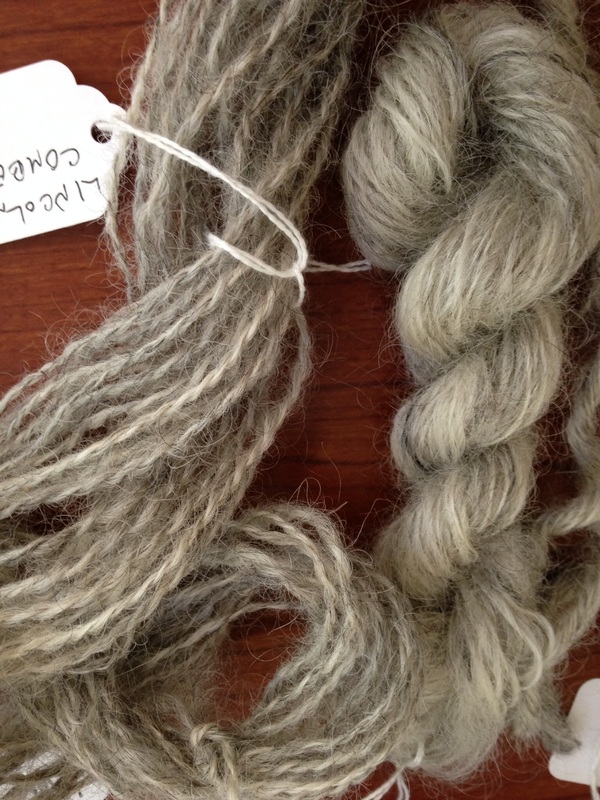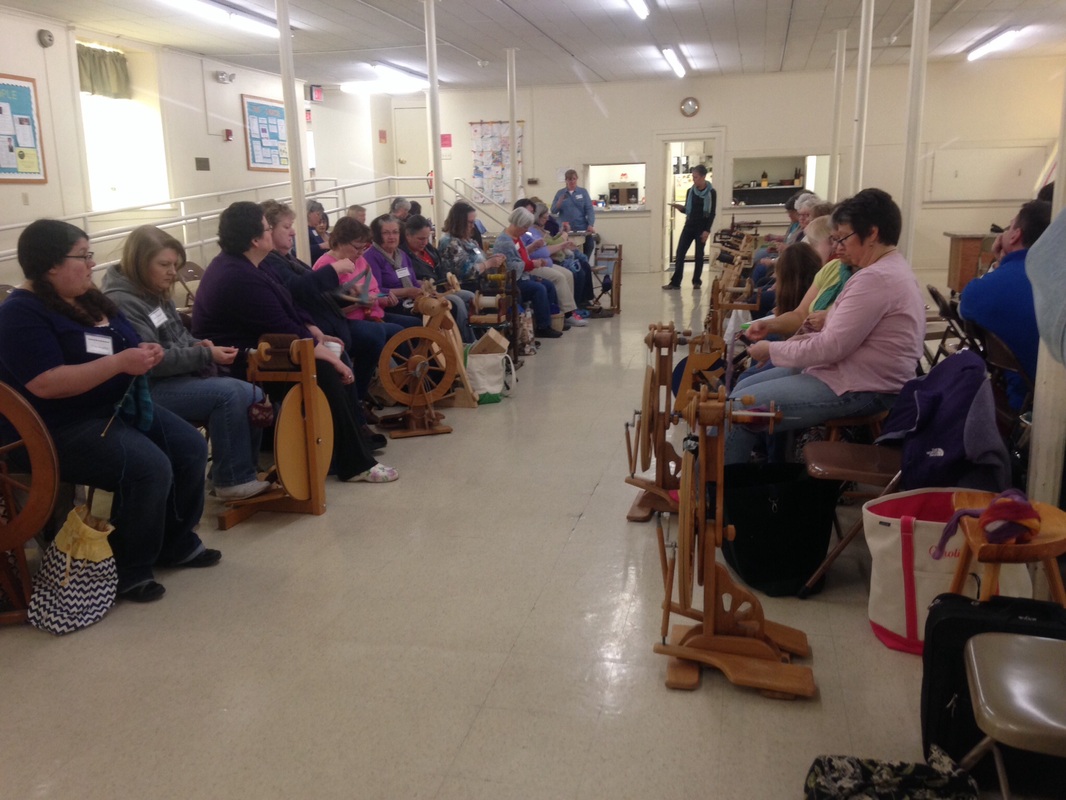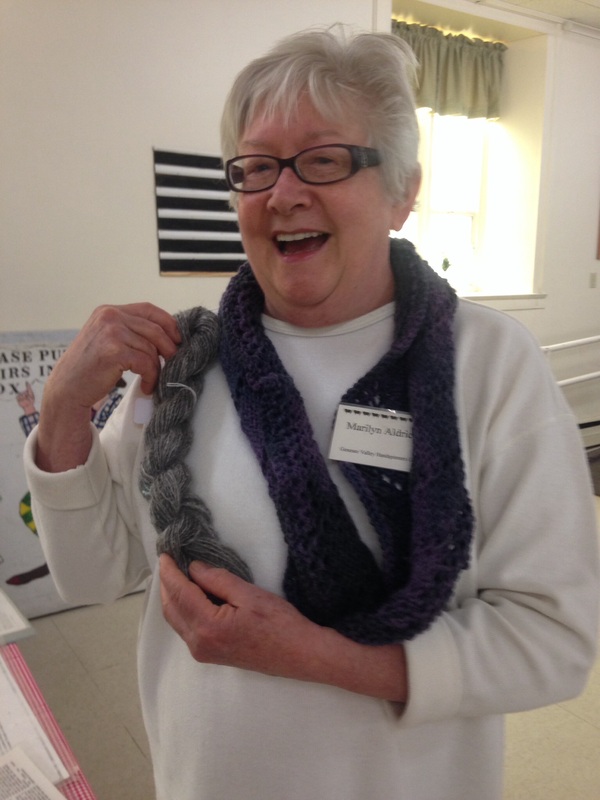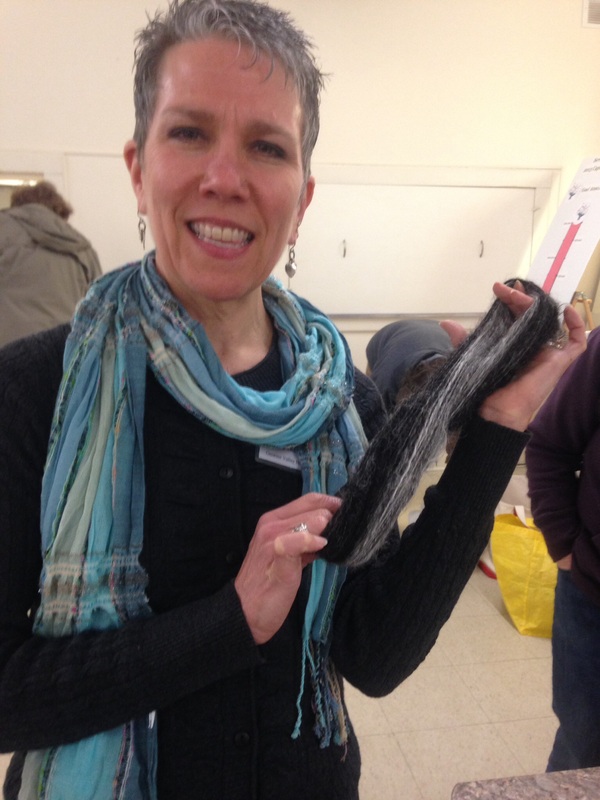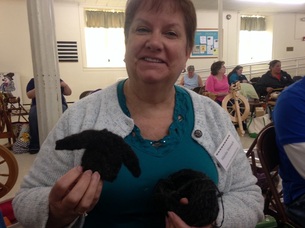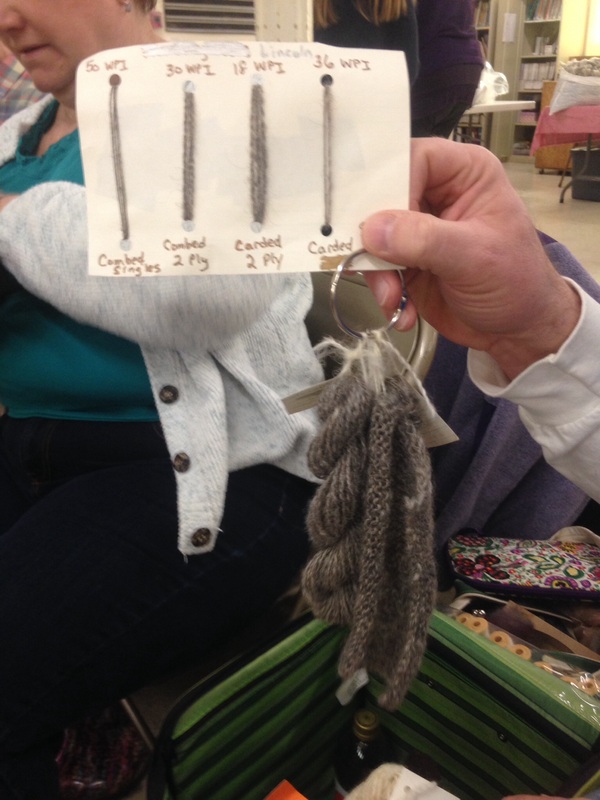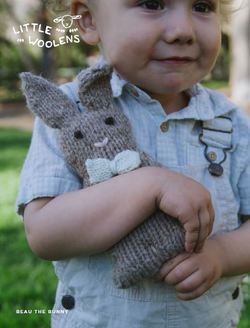 Lately I have been into podcasts... really into podcasts. I've been listening to them so much that I hardly listen to music anymore. Why listen to music when you can learn and listen to inspiring stories? Last week I discovered a new favorite podcast: Woolful podcast by Ashley Yousling. Each week she interviews \different types of people from different parts of the wool and fiber arts supply chain: from sheep farmer to shearers to mills to yarn shop owners to fiber artists. While I have just started to expand my fiber knowledge into knitting beyond a basic knit and purl scarf, and I definitely don't spin or weave, I have learned so much about the fiber industry and the different things people are doing with it. I binge listened to the first 17 episodes in about a week (thankfully we haven't started field work yet, so I've been listening nonstop wile doing office work). Things I have learned so far: Extreme knitting uses giant needles to knit with an already felted fiber. Little Dandelion is one company that makes these large needles and has some some very creative things. Her work is so awesome and I can't even imagine how warm her throws are. Unfortunately there is no way I could afford that fiber! I've seen some really huge knit blankets on Pintrest and I finally figured out how they're made! Efforts for more mills: Ashley also talked with Matt Gilbert, a shearer from California who discussed his current endeavor to start a fiber mill called Mendocino Wool and Fiber. Right now they have an Indegogo campaign to raise the capital to start the project. It was really interesting to hear how there is such a lack of the "middle man" in the fiber industry- ie there are a lot of people who produce wool, and a lot of people who want to make things with it, but a lack of someone to create high quality yarns. He hopes to process >1000lbs of yarn in a week, which is a really good sized mill. It's nice that people are recognizing the need for more mills in the U.S. Currently, the wait time for any of my roving, yarn and blankets is a minimum of 2 months but can be 6-12 months depending on where it is sent. Knit alongs: I am embarrassed to admit that I did not know of this concept previously.. Ashley is organizing a monthly knit along with patterns from designers featured in the show. This month the pattern is for an adorable stuffed bunny. This pattern was designed by Ashley for a line she is developing with a friend, called Little Woolens. The pattern (along with great discussion about the podcast), can be found on Ravelry. So far I have not been very adventurous with my knitting, but listening to people on this podcast talk about their "fiber journeys" has really made me want to start stepping out and trying new things. I have finished the body and the ears and depending on how this trial bunny turns out, I'd like to make some for friends who are having babies this summer and use my own wool! I will (maybe) post photos of this project when I finish. Seventeen episodes and more than 25 hrs of listening time is a lot to sum up in one blog post, so you're just going to have to listen for yourself! You'll learn about new yarns you'll want to try, patterns to download, and people in the fiber industry who are just genuinely excited about fiber. If you are a wool or fiber arts enthusiast like me, I promise you will be incredibly inspired! So, pick up your knitting needles and get listening.
1 Comment
It's been quite a while since I've updated you all about what's been happening at Orchard View! Starting a job, still finishing my graduate work, and purchasing a house have all left very little excess time. March 16th-19th was Ag Literacy Week in New York. This week is sponsored by New York Agriculture in the Classroom and each year, a book is chosen to be read in elementary schools across the state. The books are chosen to be very educational; no talking animals, representative of the topic, teach a practical lesson, etc. The reading of the book is accompanied by hands-on activities for the kids. I was very excited last year when I found that this year's book was going to be "Weaving the Rainbow" by George Ella Lyon. This book goes over the process of shearing sheep to weaving. 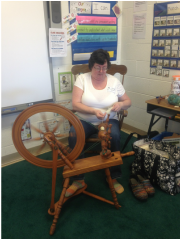 If you read my blog or follow my Facebook, you know how passionate I am about sheep and wool, and educating others about those two things, so you can only imagine my excitement! Now that I'm back home living in western NY, I got in contact with my local Cooperative Extension office to become a volunteer. I was even more excited when I found out that I'd have the opportunity to read at the elementary school I attended as a kid. We planned four different stations for the kids to rotate through: 1. Reading of the book 2. Learning about fleece- hands on fleece feeling, spinning demonstration, crochet demonstration 3. Hands-on making of a felted ball 4. Meet bottle baby lambs I got in contact with Diane who owns/operates Acorn Works Fiber Processing, a local fiber processing business, to help with the spinning demonstration, and I donated a Lincoln fleece. Another local sheep farm, Maple Lawn Farm, provided the lambs for the afternoon. I was a part of the "learning about fleece" room. Diane brought her spinning wheel and demonstrated spinning. She conveniently also had some of my wool spun up, so I could show kids a finished product! An extension employee gave a crochet demonstration and had different types of yarn and finished products like hats and scarves to see and feel. I brought in some of my raw Lincoln Longwool wool, Diane brought some Merino and Romney wool, and we also had crossbred meat-breed wool to use for a fleece discussion, which was the part that I ran. The kids rotated through each of the three stations in our classroom and I had 10 minutes to talk about the process of shearing and steps to make wool become yarn. I started by discussing the difference between the different types of wool, and used an analogy of different dog breeds to discuss why the wool from different sheep looked and felt different from each other. I then had them feel the four different fleeces and pick out their favorite. Hands-down my Lincoln fleece was the favorite of the day (if you need another reason to buy my fleeces, just trust the 2nd graders! haha), and they really didn't like the feel of the meat breed wool. I then had them smell the fleece, to which the response was a lot of "ewwww"s and scrunched noses (again, they all agreed mine smelled the best). We talked about the process of washing and then showed a set of carders to talk about how the wool is "combed". Next, the kids got to feel the roving and we discussed the process of dying. Finally, we talked about how the roving becomes yarn by way of Diane's spinning demonstration. This event was a lot of fun! The kids asked wonderful questions like how the shears work to cut the wool off and whether it hurts the sheep, and why the wool felt "sticky", which led to great discussions about lanolin. They definitely learned a lot throughout the afternoon, and it really demonstrated the importance of agricultural education in today's school system, where most kids have no idea what happen on farms. A big thanks to New York Ag in the Classroom for planning, Battenkill Fiber Mill for donating time & resources to make the roving, and Genesee County Cooperative Extension for coordinating the event locally. Events like these happen throughout the state for Ag Literacy Week and volunteers spend a lot of time getting the books and corresponding materials (like the wool & roving samples) sent around the state, so thank you to everyone! Back in May, I had someone from the Clotho's Handspinners group in Richmond, Virginia ask for a fleece to use for a Rare Breeds Workshop. I was thrilled that they asked me, as I love to share the Lincoln Breed with others! It's also encouraging that many groups are investigating different breeds of sheep (see the previous blog post about the Genesee Valley Spinner's Guild sheep study back in the spring!). I met with members of the group at the Maryland Sheep and Wool Festival back in May (which yes, I still have to post pictures of...) and they shared with me photos of the Rare Breeds Workshop that was held this past weekend. I absolutely love seeing what is being done with my wool, so if you have previously purchased some of my wool, please share with me what you've done! Here are some of the awesome photos from their workshop. To see the full album visit: http://www.pinterest.com/jlhinkes/rare-breeds-longwool-spinning-workshop/ Thank you Becky for contacting me, and also Judy for the photos. Lincoln Longwool handspun samples
Goodness I am WAY behind in keeping you all updated with our farm happenings... It's been a crazy time of the year with lambing, finishing up this semester of graduate school at Cornell, and everything else that happens when the world wakes up in the spring. Last month in April, I had the pleasure of attending the Genesee Valley Handspinner's Guild (http://www.gvhg.org/) meeting to participate in their current "sheep study". Each month, members of the guild receive a small sample of a different breed of sheep so they can learn about breeds, textures, and discover new types of sheep. In March, we supplied the guild with some of our Lincoln lamb wool, and I wanted to attend the meeting to see what members thought of our wool and what they did with it. The results were pretty impressive, as you can tell from the photos below! While I don't spin, being a member of the guild will hopefully serve as a way to promote not only our business, but our breed and I look forward to being involved in the future. Maybe they'll even teach me how to spin one day! 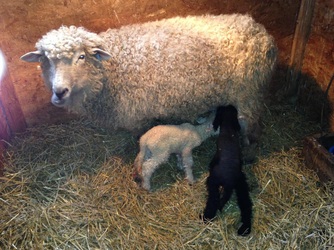 Emmy with her two new lambs, born Saturday. Emmy with her two new lambs, born Saturday. Surprises happen all the time on the farm. Those of you involved in agriculture are well aware... We start breeding our ewes right after the county fair in July, hoping that all lambs will be born before the middle of February. A sheep's gestation period is approximately 148 days, which is why were very surprised to find these two cute lambs in the barn Saturday morning! Counting backwards, this ewe must have been bred the first day they were in with the ram, and run a few days short on her gestation period. This is one of our Hampshire-Lincoln crosses, so its always a surprise to see what colors the lambs end up being. The black one is a ewe lamb and the white one is a ram lamb. They are 7/8ths Lincoln. We had to bring the ewe lamb inside for a few hours due to the temperatures being in the teen's and her brother being a more aggressive nurser. But after sitting by the fire in our living room for a few hours, she's been much more active. Because we are a small hobby farm with only a few lambs at a time, often end up with a few in the house during the winter "just in case". Hopefully this means more lambs will be coming very soon! 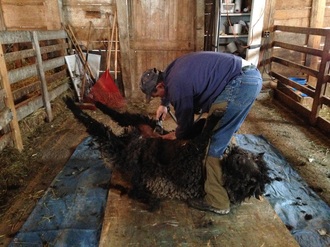 Benny, our yearling ram, being shorn. Benny, our yearling ram, being shorn. So after a surprise on Saturday morning, we got to surprise the sheep by shearing. People often ask why we decide to shear at the beginning of winter. It is a bit odd, but we do it for several reasons: 1. We shear in May for the summer and for our shows in the fall, and by the time winter comes around, they have a very long fleece on them. They stay in the barn for most of the winter, so we want to make sure we shear them for a high quality fleece before it gets matted and dirty during the winter in the barn. 2. Our first sheep show is always the first weekend in May, and we like to have a minimum of 12 weeks of wool on the sheep, which means we have to shear in December. 3. Because our sheep have so much wool, lambs sometimes have a hard time finding the udder underneath the mother when they are born. Additionally, we keep a close eye on our ewes when we are expecting lambs, and you can often tell when a ewe is going into labor by a swollen vulva and mucus. These signs are difficult to see with so much wool. On ewes with full fleece, people often "crotch" the ewes, which is shearing just their rump and under the belly, to assist the lamb. We just prefer to shear them. While each sheep is being shorn, someone is nearby skirting the previous sheep's fleece. Skirting is the process of picking through the wool to get out any organic matter, straw, matted clumps, and short or low quality pieces (like stomach or leg wool). We now have about 30 fleeces to do something with! In the coming weeks, we will be packaging all the newly shorn wool to be sent to MacAusland's Woolen Mill and the Finger Lakes Woolen Mill to be made into blankets, yarn and roving. We also will be saving some of the nicer fleeces to be sold as raw fleeces to handspinners. Send us an email if you are interested! Our semi-annual shearing day is rapidly approaching, and after very successful sales at the NYS Sheep and Wool Festival, we are very interested in having more products made out of our wool. The question is... what will you all buy? If you could take just a second to fill out this quick survey, it will really help us determine what products to spend most of our resources marketing. Thanks! :) |
AuthorEmmaline Long, main owner of Orchard View Farm, has a passion for Lincoln sheep and loves educating others about her breed and farm, She currently serves as the Vice President of the National Lincoln Breeders Association. Archives
October 2020
Categories
All
|
Orchard View Lincoln Longwools7617 S. Lake Rd., Bergen NY 14416 |
Contact UsStay Up-To-DateFollow our blog!
|
